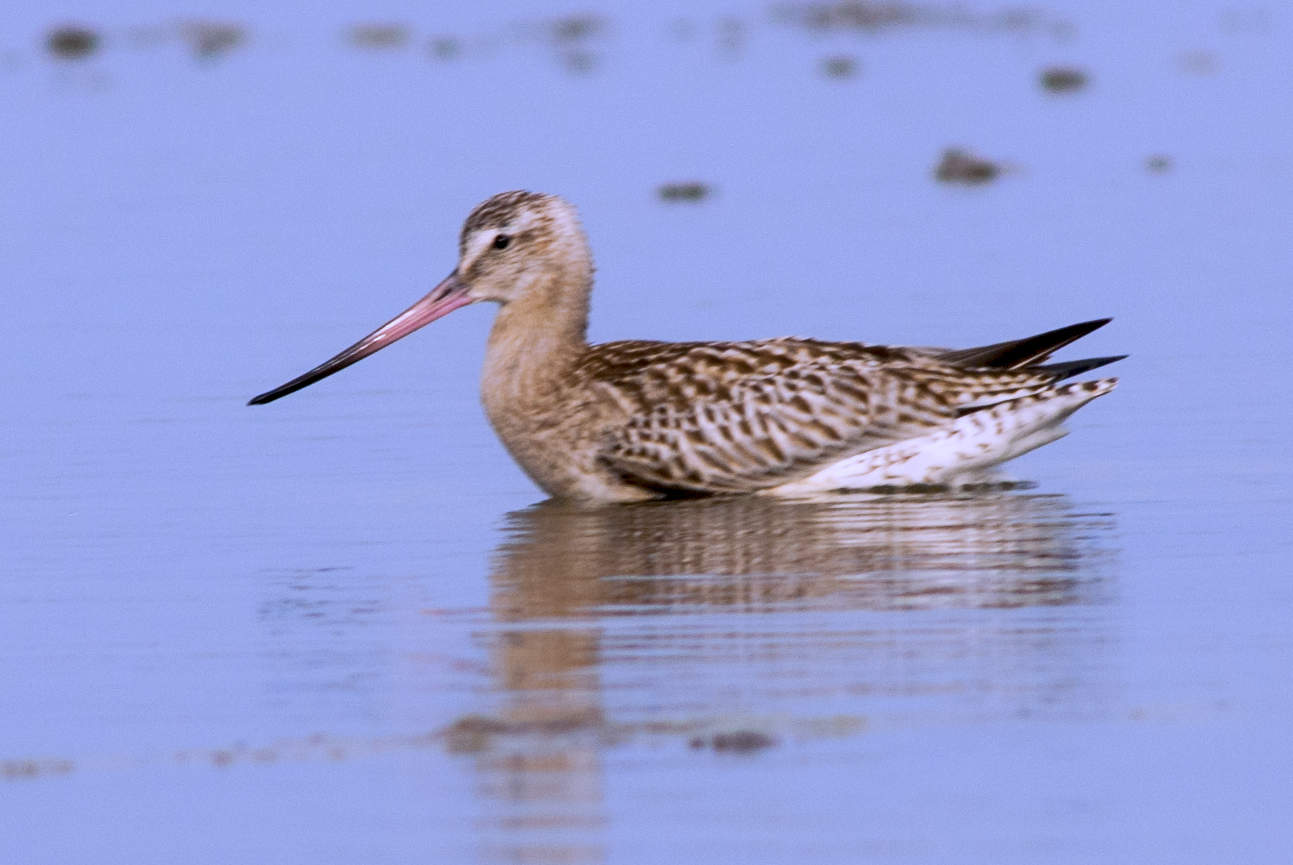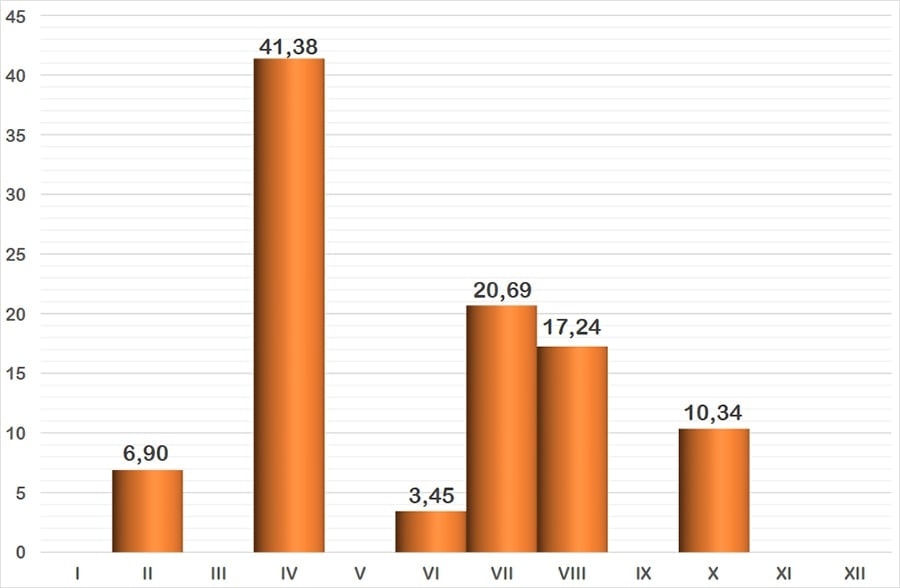Slightly smaller in size than the black-tailed godwit, it differs from the latter by its slightly shorter and clearly up-curved bill and equally shorter legs. In flight it is unmistakable because the wing pattern in which the white stripe visible in the black-tailed godwit is not visible, the rump is off white and extends to the lower area of the back, and the tail then shows the feature that identifies them, while the black-tailed godwit has a wide black stripe, the Bar-tailed godwit has a characteristic barred pattern. The plumage is usually brownish grey with a dark scaled back and in summer the adults display a reddish-red colouration on the breast which extends to the head and belly.

Species 1
Bar-tailed godwit
Scientific name
Family 2
Taxonomic Affinity Group 3
Phenology 4
It is eminently a migratory bird, in fact, it is a great flier, travelling large distances, with a documented non-stop flight between Alaska to New Zealand (about 11500 kilometres). It is commonly observed in the straits, although it is more solitary and less abundant than the Bar-tailed godwit

The graph represents the probability of seeing a species during the year, grouped into months. The vertical axis indicates the percentage value. Each of the bars expresses its value. The horizontal axis represents the months: I = January, II = February, III = March, IV = April, V = May, VI = June, VII = July, VIII = August, IX = September, X = October, XI = November and XII = December.
Observation recommendations
With a little attention, it can be easily identified among the waders that use the edges of the ponds in the observation areas, if there are no other godwits, its size soon attracts attention.
Observation areas where we can find it
Notes
[1] The names used are from the list of birds of Spain, drawn up by SEO/BirdLife and updated to 2019 (https://seo.org/listaavesdeespana/). The reference is: Rouco, M., Copete, J. L., De Juana, E., Gil-Velasco, M., Lorenzo, J. A., Martín, M., Milá, B., Molina, B. & Santos, D. M. 2019. Checklist of the birds of Spain. 2019 edition. SEO/BirdLife. Madrid.
[2] The taxonomic family to which it belongs is indicated.
[3] Traditionally, waterbirds have been grouped according to their taxonomy or “taxonomic affinity”, i.e., when some birds coincide in certain features that allow them to be classified scientifically, but without leaving the rigour of science, they are put together in these groups so that they can be easily recognised. These groups are the following: Greves (belonging to the Podicipedae family), Herons and Similar (includes the families: Ardeidae -Herons- Ciconiidae -Storks- and Threskiornithidae -Ibises and spoonbills-), Ducks (the whole Anatidae family), Coots and Similar (the family Rallidae corresponding to Rails, Gallinules and Coots), Cranes (also with only one family, the Gruidae), Waders , a heterogeneous group, the most diverse of this classification, includes the families Burhinidae (Stone-curlews), Haematopodidae (Oystercather), Recurvirostridade (Avocets and Stilts), Glareolidae (Pranticole), Charadriidadea (Plovers), Scolapacidae and finally Gulls and Similar (the recently unified family Laridae, i.e. Gulls and Terns).
[4] Phenology studies the relationship between the cycles of living beings and meteorological factors, and in our latitude these factors manifest themselves as variations throughout the year, thus relating the seasons to the birds’ cycles (breeding, migratory journeys, etc.) The graph shows the probability of seeing a bird depending on the month. It uses data from 48 bird censuses carried out between October 2016 and September 2018. The method used is that of a census route with sampling stations, with a total count on the sheet of water.
